Authors
Journeys to friendship
Issue 4/1983 | Archives online, Authors
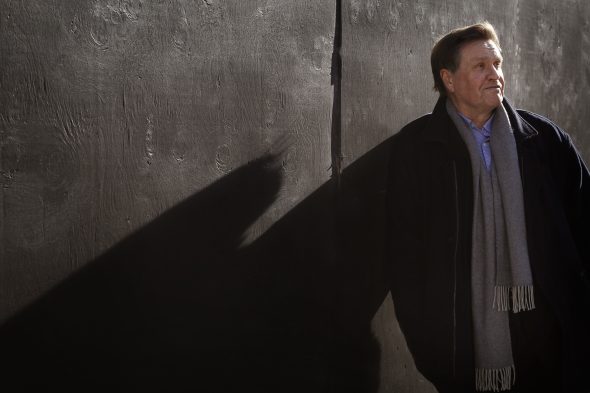
Hannu Mäkelä. Photo: Hannes Heikura
Hannu Mäkelä (born 1943) is known primarily in Finland as a noteworthy prose-writer, poet and dramatist; he also works as a department head for Otava, one of the leading publising houses. When, in 1973, Hannu Mäkelä published his first children’s book, Herra Huu (‘Mr Boo’), it came as a surprise to many people.
Luckily for Finnish children’s literature that was only the start; the book had two sequels. In 1974 Herra Huu saa naapurin (‘Mr Boo gets a neighbour’) appeared, followed in 1975 by Herra Huu muuttaa (‘Mr Boo moves house’). After that Mr Boo left his new flat to go on a long journey with a witch called Ernestiina, and hasn’t been heard of since. Hannu Mäkelä’s next books for children were Hevonen joka hukkasi silmälasinsa (‘The horse who lost his glasses’, 1977), Kalle-Juhani ja kaverit (‘Kalle-Juhani and the gang’, 1981) and Pekka Peloton (‘Pekka the brave’, 1982). With these six books, Hannu Mäkelä has come to be regarded as a classic children’s writer.
Against the grain
Issue 2/1983 | Archives online, Authors
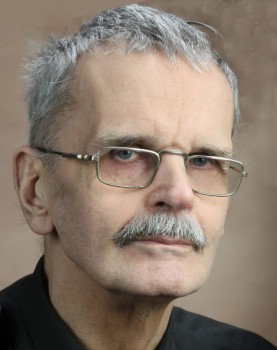
Gösta Ågren. Photo: Studio Paschinsky
Gösta Ågren (born 1936) represents at least two qualities highly characteristic of Finland-Swedish writers. He was born and grew up in a part of Swedish-speaking Ostrobothnia – in the immediate vicinity of the two small coastal towns of Uusikaupunki (Nykarleby) and Pietarsaari (Jakobstad) – which has been the home of many of the most important Finland-Swedish authors, from Runeberg and Zacharias Topelius through Mikael Lybeck and R. R. Eklund to Evert and Lars Huldén. And like Rabbe Enckell, Oscar Parland and others, Gösta Ågren comes from a family closely associated with literature – two of his brothers, Erik and Leo, are also writers, as was his sister Inga, who died young.
Otherwise Gösta Ågren is an author who in all important respects has gone his own way, often in opposition to the establishments, literary and otherwise, in southern Finland and Helsinki. More…
The solitary walker
Issue 2/1983 | Archives online, Authors
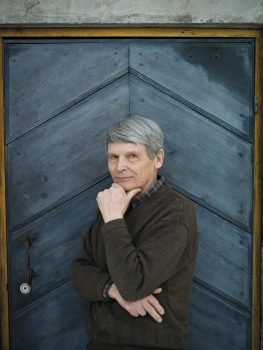
Antti Hyry. Photo: Jouni Harala
Antti Hyry, born in 1931, is a writer from northern Finland. His work is coloured by elements characteristic of the region near the Arctic Circle: rugged nature, wintry frost, the light of long summer nights, the Laestadian fundamentalist Christian sect, and the strict rules of an agrarian community.
Hyry is an engineer by training, and although he has never worked as an engineer, his world view has been built on a physical and technological foundation. This orientation, together with a basic intuition which is close to nature, has created in his works a world of fascinating conflict in which troubled man, weighed down by responsibilities, studies his environment as if to test whether it exists, and to discover what laws govern it. More…
A personal appreciation
Issue 4/1982 | Archives online, Authors
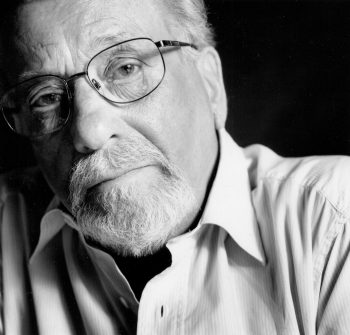
Christer Kihlman. Photo: Magnus Weckström
Almost twenty years ago, a book arrived on my table from a London publisher, a large book called Den blå modern, by someone called Christer Kihlman, of whom I had never heard. Although the book came from Stockholm, in fact it turned out to be the work of a Finland-Swedish writer, perhaps the second or third I had ever read.
The book was to me remarkable. I had never read anything quite like it before, and I have been reading adult fiction for over fifty years. Looking back now in my ancient tatty files, I see I typed three single-spaced pages of synopsis and two and a half of comment, and even translated several extracts, not something I can normally afford to do. This was partly because I was impressed with the book, partly because it was almost impossible to explain the style, or styles, in which it was written, and also it was very difficult to say succinctly just what kind of book it was. The blurb called it a ‘family chronicle’, which in a way it was, but in all other respects it was nothing like what we normally call a family chronicle, anyhow of the kind so familiar from the United States. Two sons trying to live up to their father’s image of a third son, who is dead; but in fact it seemed to me to be the story of one man’s struggle with himself and the agony of existing in a world in which pain and hatred and suffering and despair are constantly victorious over love. In the book was almost everything any thinking person struggles with in his or her mind during a whole lifetime, a search for some kind of meaning in a life that appears meaningless. More…
They believe in Father Christmas
Issue 4/1982 | Archives online, Authors, Interviews
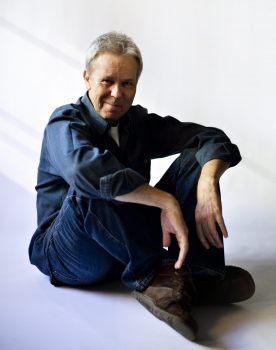
Mauri Kunnas. Photo: Otava / Katja Lösönen
Mauri Kunnas, 32, says he believes in Father Christmas more than ever before. His wife Tarja agrees; she and her husband work together in their studio in Turku on the illustrated children’s books that have won them fame in Finland and abroad. It is easy to believe the truth of the young artists’ protestations: the success of their book Joulupukki, or Santa Claus, must have seemed like a gift from Father Christmas. It appeared in the early autumn of 1981 and was taken to the Frankfurt Book Fair by its publishers, Otava, where it attracted more attention than any Finnish book had done previously. Rights immediately went to ten countries, from Japan to Canada, and four more contracts have since been concluded. Arto Seppälä intervews Mauri and Tarja Kunnas
Mauri Kunnas says he has drawn all his life. He intended to study law, but his sister persuaded him to go to art school instead. Towards the end of his course, short of money, Kunnas began to draw a strip cartoon for a Helsinki evening paper. He progressed to cartoons – but at present his plans for new books keep him too busy to contemplate anything else.
Mauri Kunnas’s first book was Suomalainen tonttukirja (‘The book of Finnish fairies’, 1979). ‘I never thought I would write children’s books until the fairy idea came into my head,’ he says. ‘At that time I was unhappily employed in an advertising agency, and life wasn’t living up to my expectations. I wanted to splash out, try something new. The fairy idea came to me as the result of a chance conversation about the Finnish world of faerie – elves, gnomes, guardian spirits and so on. More…
Reality versus morality
Issue 3/1982 | Archives online, Authors
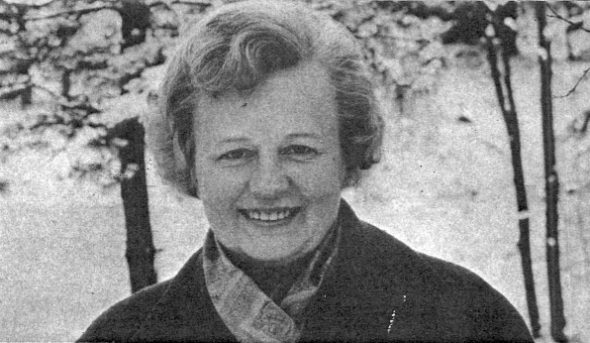
Eila Pennanen. Photo: Anonymous (Suomen Kuvalehti 1965) via Wikimedia Commons
Reviewing Eila Pennanen‘s second collection of essays, which appeared earlier this year under the delightfully ambiguous title of Kirjailijatar ja hänen miehensä (‘The authoress and her… man? … men? … husband?… husbands?’), a critic called attention to the heading she had chosen for her essay on Bernard Malamud: ‘Malamud’s ignoble hero’. His comment on this was that the moral judgment implicit in such a title would be both pointless and valueless if Pennanen had maintained it with logical consistency throughout the essay. If in fact she does no such thing, it is because she knows how to look at a character, however ignoble, with an eye for subtleties and a great deal of psychological insight. This is something one often notices about Eila Pennanen: she is apt to begin by labelling somebody or something ‘good’ or ‘bad’, and even to sound quite defiant about it, but she is never, in the end, content to leave it at that. I once heard her give a lecture on Joel Lehtonen. She startled her audience by the vehemence with which she avowed the feelings of loathing or sympathy aroused in her by characters or events in Lehtonen’s books. Her cheeks blazed as she talked. Then, just as unexpectedly, she chided herself for exaggerating, took back a lot of what she had said, laid bare the reasons for Lehtonen’s contradictoriness, and left her hearers in a condition of fruitful perplexity. Whatever they may have thought or felt about the ‘moral approach’ to criticism, they were left in no doubt as to the wit and intelligence of its leading Finnish exponent. More…
Juha Mannerkorpi (1915–1989) and the metamorphosis of the self
Issue 2/1982 | Archives online, Authors
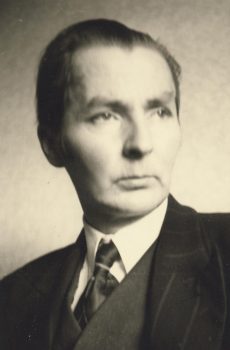
Juha Mannerkorpi. Photo: SKS Archives
The chapter, entitled ‘About calendars and other documents’, is a section of Juha Mannerkorpi’s book, Sudenkorento eli erään pakaraisen esittävät seikkailut (‘The dragonfly, or the representative adventures of a certain buttocks’, 1970). The main character is a writer, Caleb Buttocks, a long-term diabetic who can get around only on crutches and spends most of his days sitting in his room smoking and drinking beer. Pain and depression are his daily companions.
In the beginning, Caleb Buttocks attempts a real adventure: lifting himself out of the swamp like Baron von Münchhausen and going on an outing with his wife. The adventure comes to a bad end; he is not up to it. Thereafter, he has to be content with ‘representative adventures’: dreams, memories, and nightmares which are interwoven with the present time.
Sudenkorento is largely a first-person narrative which operates on many levels and the language of which is exceptionally rich. The narrator makes use of many different elements: fairy tales, poems, fantasies realistic narratives, and reminiscences. Sudekorento can be considered the most important book by Juha Mannerkorpi (1915-1980), and represents a synthesis of his earlier writing, which includes some twenty works since 1946: poems, plays, radio-plays, novels, and short stories. After the publication of Sudenkorento Mannerkorpi wrote a short diary-like work, Päivänsinet (‘Heavenly blue’, 1979), a study of the will to live in the shadow of a serious illness, diabetes, which is a subject he often dealt with in his work. Characteristic of Mannerkorpi’s writing are his analyses of the relationship of the self with the world and his explication of existential questions. In the European literary milieu, he is closest to Camus, Sartre and Beckett, all of whom he has translated into Finnish. More…
Johan Bargum’s analyses
Issue 2/1982 | Archives online, Authors
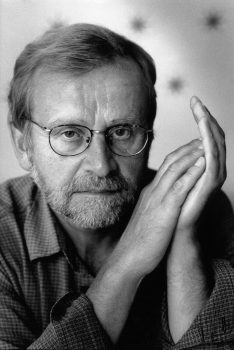
Johan Bargum. Photo: Irmeli Jung
Few Finland-Swedish authors can make a living by their writing. A readership of little more than 300,000 cannot support a large number of writers, and only the most successful books sell more than a thousand copies. Writers have thus no choice but to seek other markets, notably in Sweden or among the Finnish-speaking population.
Both alternatives present problems, but popular writers like Henrik Tikkanen and Christer Kihlman are tending more and more to publish simultaneously in all three markets. Since the publication of his novel Den privata detektiven (‘The private detective’) in 1980, which even became the Book of the Month in Sweden, Johan Bargum has joined this group. Enthusiastic reviewers have since speculated on the possibility of translations into other European languages.
Born in 1943, Bargum grew up in Helsinki and, like so many other writers with their roots in the Finnish capital, he comes from an upper-class family. Politically he belongs to the left, while artistically he has benefited from family tradition: both his grandmother, Margit von Willebrand-Hollmerus, and his mother, Viveca Hollmerus, are well-known authors. Writing as a family tradition is actually quite a common phenomenon in Finland-Swedish literature.
A social conscience
Thanks to his skill as a dramatist as well as a prose-writer, Johan Bargum has been able to live by his pen for the past ten years. Early in the 1970s he had a success with Som snort (‘A cinch’), Bygga bastu (‘Building a sauna’) and Virke och verkan (‘Material and the making’), all specially written for Lilla Teatern, the Swedish-language theatre in Helsinki. In this trilogy he was concerned with the difficulties encountered by small businessman in their struggle against large monopolies. His text is characterized by a strong ironic humour. More…
A portrait of Elmer Diktonius
Issue 2/1982 | Archives online, Authors
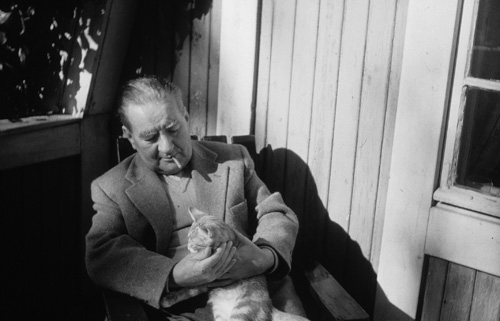
Elmer Diktonius at his home in Kauniainen (Grankulla). Photo: Wikimedia Commons / Public domain
Elmer Diktonius, one of the leading Finland-Swedish modernists of the 1920s, was a revolutionary poet, prose-writer and critic who also tried his hand at composing. Professor George Schoolfield, whose article on Diktonius appears below, appends his own translations of several of the lyrics: a filler selection is going to be published in the United States, Recently Professor Schoolfield has been working on a biography of Diktonius which he hopes to publish soon.
The literary fate of the Finland-Swedish modernist Elmer Diktonius (1896-1961) has not been an altogether happy one. Saluted early and late in his career as Finland’s Strindberg and as a possible rival to Mayakovsky in the contest for the greatest lyricist of the revolution, Diktonius would seem, surely, to deserve a place on the world’s literary stage. Yet the attention he has received outside the north has been mostly unwitting: the writers of program notes quote his description of the Silbelius Fourth, ‘the bark-bread symphony’ without knowing its source, the collected concert-reviews of Opus 12: Musik (1933). Surveys that might have introduced him to a larger public are silent. The chubby Pelican Guide to the European Literature of Modernism ignores him; the Penguin Book of Socialist Verse omits him from its 134 specimens of the lyric left; and Ulrich Weisstein’s volume of Expressionism as an International Literary Phenomenon does not have him in its chapter on ‘Expressionism in Scandinavia’, although he would qualify – as the Swedish scholar Bill Romefors has proved – as the major northern heir of German expressionism. More…
On Sirkka Turkka
Issue 2/1982 | Archives online, Authors
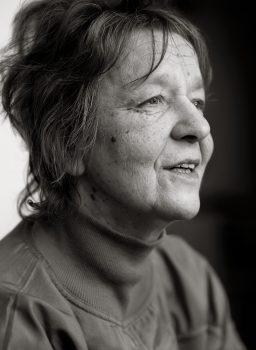
Sirkka Turkka. Photo: Pertti Nisonen
1.
I met Sirkka Turkka towards the end of the sixties; she was a friend of a girl-friend of mine.
We called her Hemuli. Not that she bore any resemblance to the Hemulen of the Moomin books, but she did view the world with the same charitable curiosity as some of Tove Jansson’s immortal characters.
In the evenings Hemuli would speak with wit and wisdom, as the sky darkened, then paled towards dawn. Her words were spontaneous: she talked of nature, of the city, always with a gentle understanding, a compelling magic which dissolved ideas into music, full of a sad beauty, echoes of loneliness, painful and happy memories. She looked life straight in the eye, without illusions.
What I’m saying, Sirkka Turkka was a master of the spoken word. She was a story-teller, a ballad-singer, a reciter of epic tales, creating literature of a kind no longer recognized as literature. More…
The elusive reality of Ralf Nordgren
Issue 1/1982 | Archives online, Authors
The poet and novelist Ralf Nordgren, part Ålander by blood, has close family ties with some of the Åland Islands’ most most outstanding cultural figures. He is the nephew of Sally Salminen, and he was in fact born – in Vasa – in 1936, the very year in which she published her best-selling novel Katrina. His brother is the composer Pehr Henrik Nordgren, his mother, Aili Nordgren, is herself a writer who has published five novels based on life in Åland (see Books from Finland, 4/1977).
Nordgren’s father, who shares his wife’s left-wing views and was once a communist party official, is not a writer, but his formative role is quite apparent, clearly reflected in the figure of the father in the first of Ralf Nordgren’s novels, Med (‘Taken along’, 1968), in which there is an appreciable autobiographical element. On one level he is responsible for the political substratum of the family, on another for the regularity with which they move house in time with his changes of job. More…
Veijo Meri’s errant heroes
Issue 3/1981 | Archives online, Authors
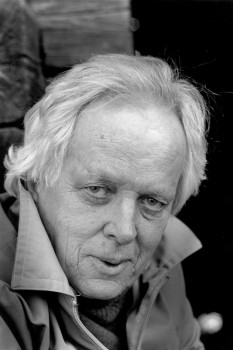
Veijo Meri. Photo: Irmeli Jung / Otava.
At the funeral of F. E. Sillanpää, the Nobel prize-winner, Veijo Meri was one of the pall-bearers, representing the younger generation of Finnish writers. The coffin was heavy and it suddenly began to slip the hands of the bearers just as they reached the church doors. A tiny stone in one of his shoes was causing Meri the most intense agony. It was a critical moment. Novels, short stories and plays by him are full of such situations. The characters stumble and are confused. The more difficult the situation, the more comic it often is.
Veiio Meri (born 1928) grew up in army barracks in the small town of Hämeenlinna. His childhood and youth were overshadowed by the war – as is reflected in many of his works. His first book, Ettei maa viheriöisi (‘Lest the land grow green’, 1954) is a collection of short stories about a lonely soldier wandering on both sides of the lines. More…
Pekka Tarkka on Antti Tuuri
Issue 2/1981 | Archives online, Authors
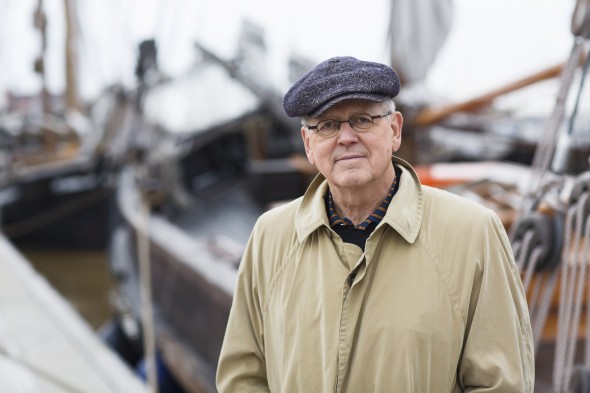
Antti Tuuri. Photo: Jouni Harala
A character in one of Antti Tuuri’s short stories, a German engineer, remarks: “It has always seemed to me that the Finnish language doesn’t contain individual words – it is just an effusion from a state of mind.” The quotation is taken out of context but it serves as a good description of the slow and sentimental or atmospheric tradition of prose style developed by a number of Finnish writers. This is a category which does not include Antti Tuuri (born 1944). His prose is crisp, clear and concrete in the Indo-European manner. It is not in the least ‘an effusion from a state of mind.’ He uses ‘individual words’ precisely, concrete observations, descriptions of specific phenomena; it is not rare to find numerals in his text.
Tuuri’s style undoubtedly owes something to his training and background. He qualified as an engineer and has worked in a number of posts requiring a high level of technical skill and business ability: he was technical supervisor in a newsprint works and in a wallpaper factory, he has sold Finnish printing equipment abroad and has trained engineers in his field. When Tuuri became Chairman of the Union of Finnish Writers in 1980 he brought to the Union’s administration the modern and professional management techniques that are characteristic of his approach. More…
Studies in obsession
Issue 2/1981 | Archives online, Authors
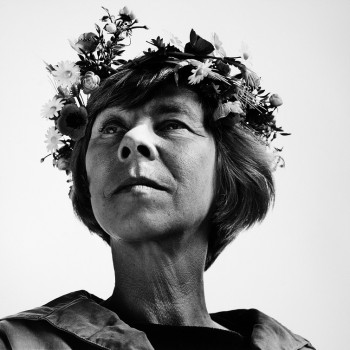
Tove Jansson. Photo: Hans Gedda
From Tove Jansson’s first short book, Småtrollen och den stora överstämningen (‘The little troll and the great flood’, 1945) to her latest volume of short stories, Dockskåpet (‘The doll’s house’, 1978 – see extracts 1 & 2), there is a great step, and few of the readers of that first children’s story could conceivably have foreseen just how far its writer was to go. Since her start in 1945 Tove Jansson’s reputation as the originator of the Moomintroll stories has become worldwide, and in one sense her own creation must have become a burden to her, not least because many of the themes which have emerged have been difficult to encompass within the Moomin framework. It is not easy for a writer who has created a reputation as a children’s author to break through what might be termed the ‘adult barrier’, but Tove Jansson has shown herself determined to do so, and with Dockskåpet she must surely have overcome any lingering doubts her readers may have had. Here is the adult writer, firmly in control of her art and delving into subjects far removed from the child mentality. More…
On Arto Melleri
Issue 1/1981 | Archives online, Authors
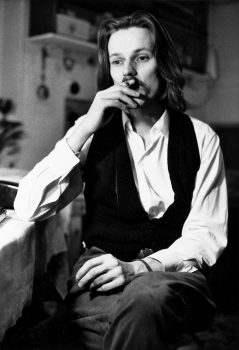
Arto Melleri, 1982. Photo: Pekka Turunen.
Arto Melleri (born 1956) is an experimenter, and, though still young, has lready explored a vanety of forms. He made an unusual start by writing, early in the 1970s, for a series called Kontakti-kirjat (‘Contact Books’): these were intended for a teenage audience and consisted of short stories and confessions written by young people. It is possible Melleri now feels some embarrassment at this debut. It did, however, get him off to an early start in poetry, and his first volume, Slaageriseppele (‘A bouquet of hit-tunes’, 1978) contains a faintly nostalgic piece about a teenage boy who churns out poems for the local newspaper in Ostrobothnia and collects his pittance for them.
Melleri is also involved in the theatre. He has studied at the Finnish School of Drama, and worked as dramaturg in the Finnish Radio Theatre. Together with Jukka Asikainen and Heikki Vuento, he wrote the script of the play Pete Q, which was a big hit in the summer of 1978, when it was performed by a scratch fringe group of actors bored with the conventional theatre with some gifted young drama students, and directed by the talented young Arto af Hällström. It is an avant-garde play, cutting through the current theatrical shibboleths, and establishing the point of view of the new theatrical generation. More…
-
Currently browsing
Interviews with Finnish authors and introductions to their work
-
RSS feed
Subscribe to RSS feed for Authors
-
List of authors and contributors
- Abu-Hanna, Umayya
- Ågren, Gösta
- Aho, Hannu
- Aho, Juhani
- Aho, Claire & Westö, Kjell
- Ahola, Suvi
- Ahti, Risto
- Ahtola-Moorhouse, Leena
- Ahvenjärvi, Juhani
- Ala-Harja, Riikka
- Alftan, Maija
- Alhoniemi, Pirkko
- Anderson, John
- Andersson, Claes
- Andersson, Jan-Erik
- Andtbacka, Ralf
- Anhava, Tuomas
- Antas, Maria
- Apunen, Matti
- Aro, Tuuve
- Aronpuro, Kari
- Autio, Milla
- Bargum, Johan
- Bargum, Marianne
- Barrett, David
- Binham, Philip
- Björling, Gunnar
- Blau DuPlessis, Rachel
- Bolgár, Mirja
- Boucht, Birgitta
- Bremer, Caj
- Bremer, Stefan
- Brotherus, Elina & Ala-Harja, Riikka
- Byggmästar, Eva-Stina
- Canth, Minna
- Carlson, Kristina
- Carpelan, Bo
- Chan, Stephen
- Chorell, Walentin
- Diktonius, Elmer
- Ekman, Michel
- Ekroos, Anna-Leena
- Enckell, Agneta
- Enckell, Martin
- Enqvist, Kari
- Envall, Markku
- Eskola, Kanerva
- Fagerholm, Monika
- Flint, Austin
- Forsblom, Harry
- Forsblom, Sabine
- Forsström, Tua
- Gothóni, Maris
- Granö, Veli
- Gripenberg, Catharina
- Gröndahl, Satu
- Grünthal, Satu
- Haanpää, Pentti
- Haapala, Vesa
- Haasjoki, Pauliina
- Haatanen, Kalle
- Haavikko, Paavo
- Hämäläinen, Helvi
- Hämäläinen, Timo
- Hännikäinen, Timo
- Hänninen, Anne
- Hannula, Risto
- Harju, Timo
- Härkönen, Leena
- Harmaja, Saima
- Hassinen, Pirjo
- Havukainen, Aino & Toivonen, Sami
- Hawkins, Hildi
- Heikkilä-Halttunen, Päivi
- Heikkonen, Olli
- Heinimäki, Jaakko
- Hejkalová, Markéta
- Hellaakoski, Aaro
- Hertzberg, Fredrik
- Hiidenheimo, Silja
- Hiltunen, Eija Irene
- Hökkä, Tuula
- Holappa, Pentti
- Hollo, Anselm
- Holmström, Johanna
- Honkala, Juha
- Hotakainen, Kari
- Huldén, Lars
- Huotari, Markku
- Huotarinen, Vilja-Tuulia
- Huovi, Hannele
- Huovinen, Veikko
- Hurme, Juha
- Hyry, Antti
- Idström, Annika
- Ingström, Pia
- Inkala, Jouni
- Isomäki, Risto
- Istanmäki, Sisko
- Itkonen, Jukka
- Jalonen, Olli
- Jama, Olavi
- Jansson, Tove
- Järnefelt, Arvid
- Järvelä, Jari
- Järvinen, Outi
- Jeremiah, Emily
- Joenpelto, Eeva
- Joenpolvi, Martti
- Joensuu, Matti Yrjänä
- Jokela, Markus
- Jokinen, Heikki
- Jokisalo, Ulla & Kortelainen, Anna
- Jones, W. Glyn
- Jotuni, Maria
- Juntunen, Tuomas
- Juvonen, Helvi
- Kähkönen, Sirpa
- Kaila, Tiina
- Kaipainen, Anu
- Kanto, Anneli
- Kantokorpi, Mervi
- Kantokorpi, Otso
- Kantola, Janna
- Karlström, Sanna
- Karonen, Vesa
- Katajavuori, Riina
- Katz, Daniel
- Kihlman, Christer
- Kiiskinen, Jyrki
- Kilpi, Eeva
- Kilpi, Volter
- Kinnunen, Aarne
- Kirstinä, Leena
- Kirstinä, Väinö
- Kirves, Jenni
- Kivi, Aleksis
- Knapas, Rainer
- Kokko, Karri
- Kokko, Hanna & Bargum, Katja
- Kontio, Tomi
- Korhonen, Riku
- Korsström, Tuva
- Koskela, Lasse
- Koskelainen, Jukka
- Koskimies, Satu
- Koskinen, Sinikka
- Krohn, Leena
- Kulmala, Teppo
- Kunnas, Kirsi
- Kupiainen, Teemu & Bremer, Stefan
- Kurkijärvi, Gene
- Kuusisto, Stephen
- Kylätasku, Jussi
- Kyrö, Tuomas
- Kytöhonka, Arto
- Laaksonen, Heli
- Lahtela, Markku
- Lahti, Leena
- Laine, Jarkko
- Laitinen, Kai
- Lander, Leena
- Lassila, Pertti
- Laurén, Anna-Lena
- Leche, Johan & Grysselius, Johan
- Lehtola, Erkka
- Lehtola, Jyrki
- Lehtonen, Joel
- Lehtonen, Soila
- Leka, Kaisa
- Lesser, Rika
- Liehu, Rakel
- Liksom, Rosa
- Lilius, Carl-Gustav
- Lindberg, Petter
- Lindblad, Kjell
- Lindgren, Minna
- Lindgren, Minna & Löytty, Olli
- Lindén, Zinaida
- Linna, Väinö
- Lintunen, Maritta
- Liukkonen, Leena
- Liukkonen, Tero
- Lomas, Herbert
- London, Mindele
- Lounela, Pekka
- Löytty, Olli
- Lundberg, Ulla-Lena
- Luntiala, Hannu
- Lydecken, Arvid
- Määttänen, Markus
- Mäkelä, Hannu
- Mäkinen, Raine
- Malkamäki, Sari
- Manner, Eeva-Liisa
- Mannerkorpi, Juha
- Manninen, Teemu
- Marttila, Hannu
- Marttila, Mervi
- Mauriala, Vesa
- Mazzarella, Merete
- McDuff, David
- Mehto, Katri
- Melleri, Arto
- Meri, Veijo
- Meriluoto, Aila
- Metsähonkala, Mikko
- Mickwitz, Peter
- Mikkola, Marja-Leena
- Mikkonen, Sari
- Mörö, Mari
- Musturi, Tommi
- Neovius Deschner, Margareta
- Nevala, Maria-Liisa
- Nevanlinna, Arne
- Nevanlinna, Tuomas
- Niemi, Irmeli
- Niemi, Juhani
- Nieminen, Kai
- Nieminen, Pertti
- Nissilä, Anna-Leena
- Nordell, Harri
- Nordgren, Ralf
- Nummi, Jyrki
- Nummi, Lassi
- Nummi, Markus
- Oja, Vesa
- Oksanen, Aulikki
- Oksanen, Kimmo
- Olsson, Hagar
- Onerva, L
- Onkeli, Kreetta
- Orlov, Janina
- Otonkoski, Lauri
- Paasilinna, Arto
- Paasilinna, Erno
- Pääskynen, Markku
- Paasonen, Markku
- Paasonen, Ranya
- Päätalo, Kalle
- Paavolainen, Nina
- Pakkala, Teuvo
- Paksuniemi, Petteri
- Palmgren, Reidar
- Papinniemi, Jarmo
- Parland, Henry
- Parras, Tytti
- Parvela, Timo
- Pekkanen, Toivo
- Peltonen, Juhani
- Pennanen, Eila
- Petäjä, Jukka
- Petterson, Viktor
- Pettersson, Joel
- Peura, Annukka
- Peura, Maria
- Pimenoff, Veronica
- Pirilä, Marja
- Pohjola-Skarp, Riitta
- Polkunen, Mirjam
- Pulkkinen, Matti
- Pyysalo, Joni
- Raevaara, Tiina
- Raittila, Hannu
- Rajala, Panu
- Rane, Irja
- Rapo, Jukka & Rotko, Lauri, Jukka
- Rasa, Risto
- Rekola, Mirkka
- Riikonen, H.K.
- Rimminen, Mikko & Salokorpi, Kyösti
- Ringbom, Henrika
- Ringell, Susanne
- Rintala, Paavo
- Roine, Raul
- Roinila, Tarja
- Rönkä, Matti
- Rönnholm, Bror
- Rossi, Matti
- Runeberg, Fredrika
- Runeberg, Johan Ludvig
- Ruohonen, Laura
- Ruuth, Alpo
- Saarikangas, Kirsi
- Saarikoski, Pentti
- Saarikoski, Saska
- Saaritsa, Pentti
- Sahlberg, Asko
- Saint-Germain, Claire
- Saisio, Pirkko
- Salama, Hannu
- Sallamaa, Kari
- Salmela, Aki
- Salmela, Alexandra
- Salmenniemi, Harry
- Salminen, Arto
- Salminiitty, Satu
- Salo, Merja
- Sammallahti, Pentti & Thrane, Finn
- Sandelin, Peter
- Sandman Lilius, Irmelin
- Säntti, Maria
- Sariola, Esa
- Sarkia, Kaarlo
- Saurama, Matti
- Savolainen, Mikko
- Saxell, Jani
- Schatz, Roman & Jarla, Pertti
- Schildt, Runar
- Schoolfield, George C.
- Seppälä, Arto
- Seppälä, Juha
- Siekkinen, Raija
- Sihvo, Hannes
- Sihvonen, Lauri
- Sillanpää, Frans Emil
- Sillanpää, Johanna
- Simonsuuri, Kirsti
- Sinervo, Helena
- Sinisalo, Johanna
- Sirola, Jouko
- Sironen, Esa
- Skiftesvik, Joni
- Snellman, Anja
- Snickars, Ann-Christine
- Södergran, Edith
- Söderling, Trygve
- Statovci, Pajtim
- Stenberg, Eira
- Strandén, Tiia
- Sund, Lars
- Suosalmi, Kerttu-Kaarina
- Susi, Heimo
- Susiluoto, Saila
- Svedberg, Ingmar
- Tähtinen, Tero
- Tahvanainen, Sanna
- Takala, Riikka
- Tamminen, Petri
- Tapio, Juha K.
- Tapola, Katri
- Tapola, Katri & Talvitie, Virpi
- Tarkka, Pekka
- Taskinen, Satu
- Tate, Joan
- Tavi, Henriikka
- Tervo, Jari
- The Editors
- Thölix, Birger
- Tietäväinen, Ville
- Tiihonen, Ilpo
- Tikka, Eeva
- Tikkanen, Henrik
- Tikkanen, Märta
- Tirkkonen, Sinikka
- Toivio, Miia
- Topelius, Zachris
- Tossavainen, Jouni
- Tuomi, Panu
- Tuominen, Maila-Katriina
- Tuominen, Mirjam
- Turkka, Jouko
- Turkka, Sirkka
- Turtiainen, Arvo
- Turunen, Heikki
- Tuuri, Antti
- Tynni, Aale
- Tyyri, Jouko
- Urbom, Ruth
- Uschanov, Tommi
- Utrio, Kaari
- Vainio, Väinö
- Vainonen, Jyrki
- Väisänen, Hannu
- Vakkuri, Juha
- Vala, Katri
- Valkeapää, Nils-Aslak
- Valkonen, Kaija
- Valoaalto, Kaarina
- Valtaoja, Esko
- Vartio, Marja-Liisa
- Venho, Johanna
- Verronen, Maarit
- Viikari, Auli
- Viita, Lauri
- Virkkunen, Juha
- Virolainen, Merja
- Virtanen, Arto
- Vuoristo, Sari
- Wahlström, Erik
- Waltari, Mika
- Warburton, Thomas
- Westerberg, Caj
- Westö, Kjell
- Westö, Mårten
- Widén, Gustaf
- Willamo, Heikki
- Willner, Sven
- Witesman, Owen
- Zilliacus, Clas
- von Koskull, Agneta
- von Schoultz, Solveig
-
Yearly archive
© Writers and translators. Anyone wishing to make use of material published on this website should apply to the Editors.
